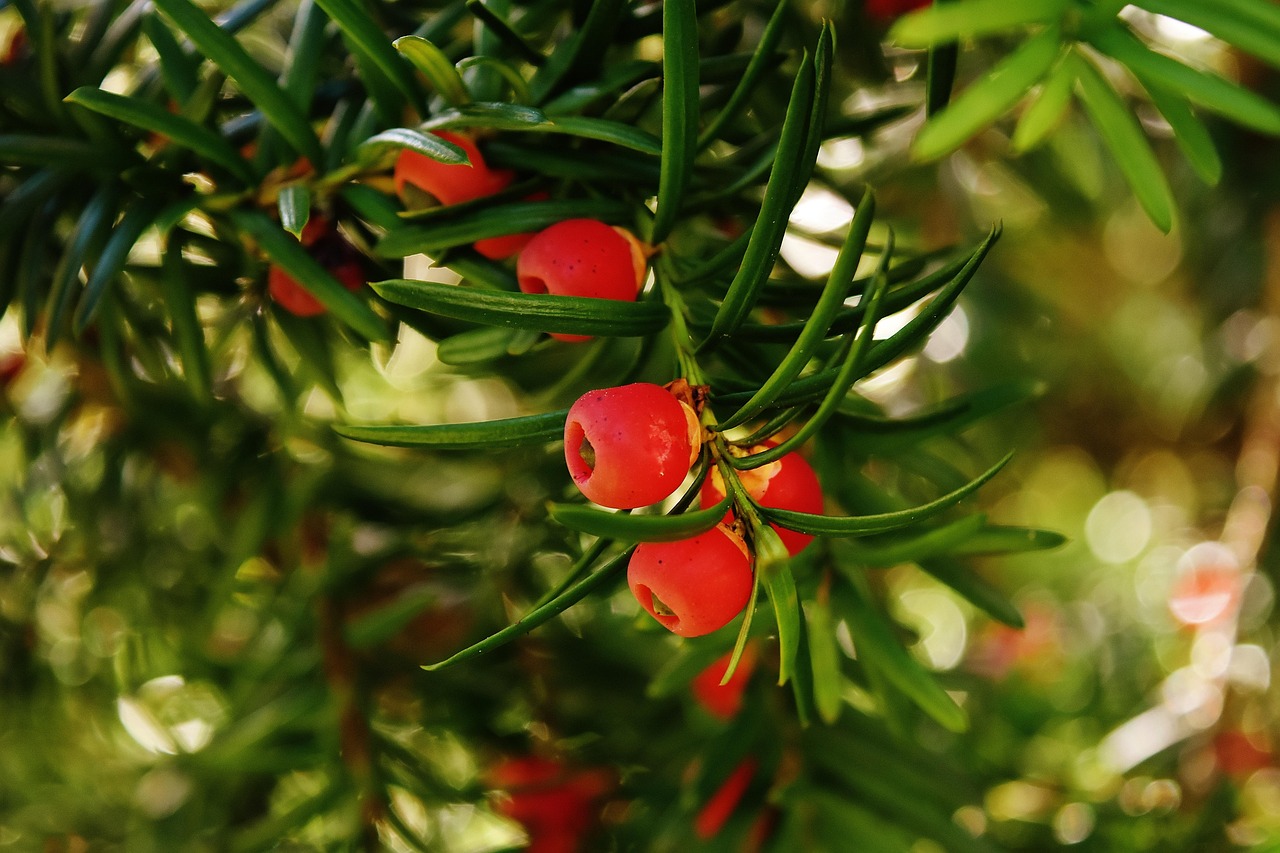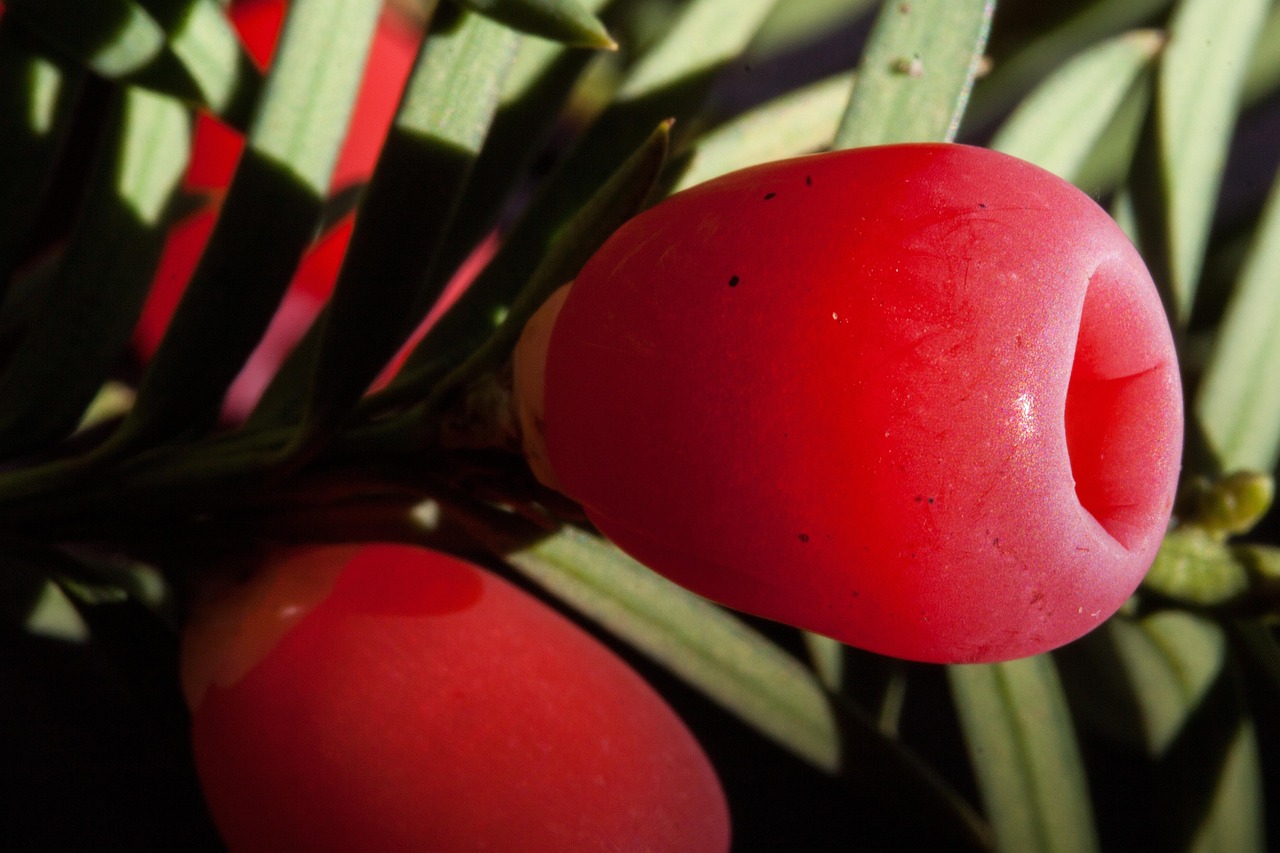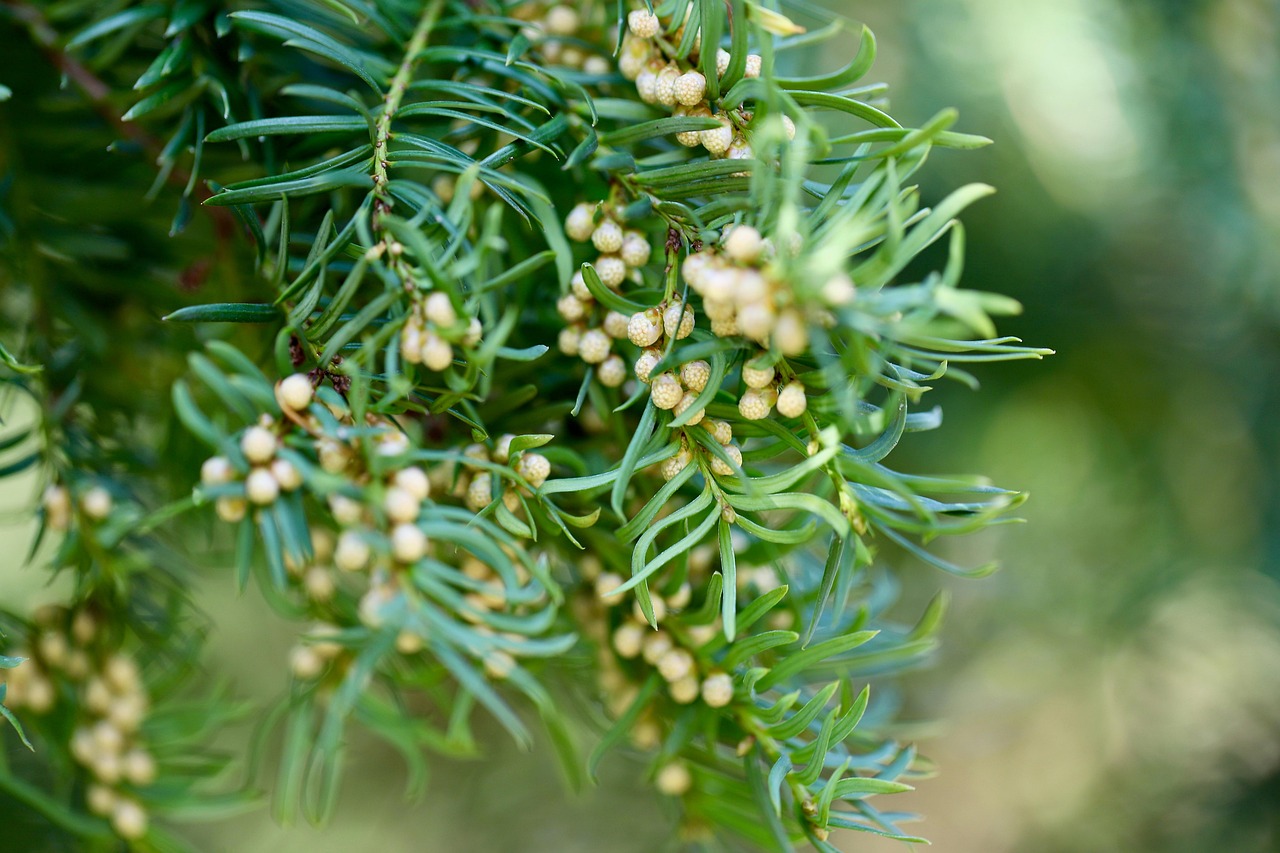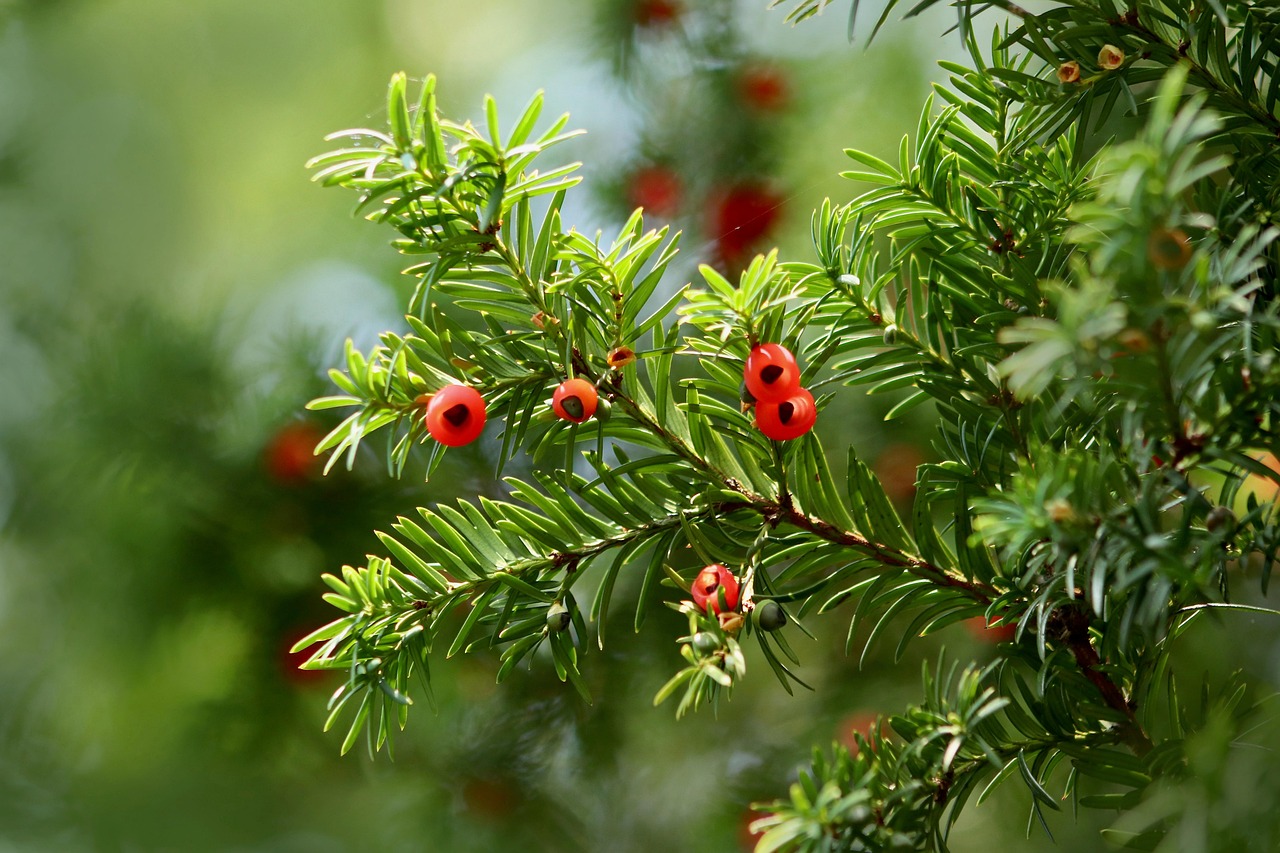Yew Trees: The Timeless Elegance Your Garden Deserves
Yew trees, with their rich history and remarkable resilience, are celebrated for their elegance and versatility in garden design. Their deep green foliage and unique growth patterns make them an excellent choice for both formal and informal landscapes.
The Allure of Yew Trees
Yew trees belong to the Taxaceae family and are scientifically known as Taxus. They are evergreen conifers that can live for hundreds, if not thousands, of years. This longevity adds a sense of history to any garden space. Yews are native to various parts of Europe, Asia, and North America, adapting well to different climates and soil types.

One of the most appealing features of yew trees is their ability to thrive in shaded areas. Unlike many other trees that require full sunlight, yews can grow in partial shade, making them perfect for gardens with limited light. Their dense foliage provides an excellent backdrop for other plants and flowers, enhancing the overall aesthetic of the garden.
Physical Characteristics
Yew trees exhibit a range of shapes and sizes. They can grow as tall as 20 meters or remain small and bushy, depending on the variety. The bark is typically reddish-brown and scaly, while the leaves are needle-like and dark green, adding a vibrant touch to any landscape.
The fruit of the yew tree is a small, red berry known as an aril, which is visually striking against the dark foliage. However, it is crucial to note that the seeds within the berries are toxic if ingested. This characteristic makes yews a fascinating yet cautionary addition to gardens, especially those frequented by pets or children.
Benefits of Incorporating Yew Trees in Your Garden
- Longevity: Yew trees can live for centuries, becoming a lasting feature in your garden.
- Versatility: They can be shaped easily through pruning, making them suitable for hedges, topiaries, or standalone specimens.
- Wildlife Friendly: Yews attract various birds and other wildlife, contributing to a vibrant ecosystem.
- Low Maintenance: Once established, yews require minimal care aside from occasional pruning.
Yew Trees in Landscaping
Incorporating yew trees into your landscape design can greatly enhance its visual appeal. Their versatility allows them to fit into various styles, from traditional English gardens to modern minimalist spaces. Yews can be used as:
- Hedges: Planting yews closely together can create a dense hedge that serves as a natural privacy screen.
- Topiaries: With regular trimming, yews can be shaped into intricate designs, adding artistic flair to your garden.
- Accent Trees: A single yew tree can act as a focal point in a garden bed filled with flowers and shrubs.
Cultural Significance
The significance of yew trees extends beyond mere aesthetics. In many cultures, they symbolize longevity and immortality due to their remarkable lifespan. Historically, yews have been associated with cemeteries and sacred sites. This connection adds depth to their presence in gardens, making them not just plants but symbols of resilience and continuity.
In addition to their aesthetic and cultural importance, yews have practical uses. The wood from yew trees is highly regarded for its strength and flexibility, making it ideal for crafting bows and furniture. This dual purpose enhances their value in both landscaping and woodworking.
| Characteristic | Details |
|---|---|
| Type | Evergreen Conifer |
| Height | Up to 20 meters |
| Lifespan | Hundreds to thousands of years |
| Soil Preference | Well-drained soil |
| Light Requirement | Partial shade to full sun |
The combination of beauty, history, and practicality makes yew trees an ideal choice for enhancing any garden space. Their timeless elegance and adaptability allow gardeners to create stunning landscapes that can last for generations.</
Growing and Caring for Yew Trees

To fully appreciate the beauty of yew trees, it is essential to understand how to grow and care for them. With the right conditions and maintenance, yews can thrive for generations, enhancing your garden’s elegance.
Ideal Planting Conditions
Yew trees are adaptable but flourish best under specific conditions. Here are some key factors to consider when planting yews:
- Soil Type: Yews prefer well-drained, loamy soils. They can tolerate sandy or clay soils but may struggle in overly wet conditions.
- Light Exposure: While yews can tolerate partial shade, they grow best in full sun to partial shade. Ensure they receive adequate sunlight for optimal health.
- Watering Needs: Newly planted yews require regular watering until established. Once mature, they are drought-resistant but benefit from supplemental watering during dry spells.
Planting Yew Trees
When planting yew trees, follow these steps to ensure successful growth:
- Select the Right Time: The best time to plant yews is in early spring or fall when the weather is cooler.
- Prepare the Soil: Amend the soil with organic matter to improve drainage and nutrient content.
- Dig a Proper Hole: Make a hole that is twice as wide as the root ball but no deeper than the roots themselves.
- Position the Tree: Place the yew in the hole, ensuring that the top of the root ball is level with the surrounding soil.
- Backfill and Water: Fill the hole with soil, gently tamp it down, and water thoroughly to eliminate air pockets.
Pruning and Shaping Yew Trees
Pruning is an important aspect of yew tree care. Regular pruning helps maintain their shape and encourages healthy growth. Here are some tips for pruning yews:
- Timing: Prune yews in late winter or early spring before new growth begins.
- Technique: Use sharp, clean tools to make clean cuts. Remove dead or diseased branches first, then shape the tree as desired.
- Avoid Over-Pruning: Yews can tolerate heavy pruning, but avoid cutting back into old wood, as this may not produce new growth.
Pest and Disease Management
While yew trees are generally resilient, they can be susceptible to certain pests and diseases. Understanding these threats can help you protect your trees effectively.
Pests
The most common pests affecting yew trees include:
- Aphids: These small insects can weaken yews by sucking sap. They often leave a sticky residue called honeydew.
- Spider Mites: These pests thrive in hot, dry conditions and can cause yellowing leaves. Regular watering can help prevent infestations.
- Scale Insects: Scale insects create small bumps on branches. Removing them manually or using insecticidal soap can help control their population.
Diseases
Yews can also suffer from diseases such as:
- Crown Gall: This bacterial infection causes galls or growths on the roots and stems. Removal of affected areas and proper sanitation can help manage this disease.
- Needle Blight: Fungal infections can lead to needle drop and discoloration. Ensure good air circulation around the tree to minimize humidity.
Yew Trees in Different Landscapes
The versatility of yew trees allows them to fit seamlessly into various landscape designs. Here are some ideas on how to use yews effectively:

Formal Gardens
In formal gardens, yews are often used to create structured hedges or topiaries. Their ability to be shaped makes them ideal for this style, providing clean lines and a sense of order.
Cottage Gardens
Cottage gardens benefit from the natural look of yews. Planting them among flowering plants creates a stunning contrast, allowing both to shine in their respective roles.
Woodland Gardens
In woodland settings, yews add height and texture. Their ability to thrive in shaded environments complements other shade-loving plants, creating a lush atmosphere.
The flexibility in placement and styling options makes yew trees a desirable feature for any garden enthusiast looking to enhance their landscape with timeless elegance.
Yew Trees: Varieties and Their Unique Features

Yew trees come in several varieties, each with its own distinct characteristics. Understanding these differences can help you choose the right type for your garden, ensuring that it complements your overall design and meets your specific needs.
Common Yew (Taxus baccata)
The Common Yew is perhaps the most well-known variety. It is characterized by its upright growth habit and dense, dark green foliage. This variety is highly valued for its versatility and can be found in many gardens worldwide.
- Height: Typically grows between 10 to 20 meters.
- Uses: Ideal for hedges, topiaries, and as an accent tree.
- Notable Feature: Tolerant of heavy pruning, allowing for creative shaping.
English Yew (Taxus baccata ‘Fastigiata’)
The English Yew is a popular cultivar known for its narrow, columnar shape. This variety is perfect for tight spaces and can be used to create formal hedges or as a specimen tree.
- Height: Can reach heights of up to 10 meters.
- Uses: Excellent for planting in narrow borders or as a vertical accent.
- Notable Feature: Its upright growth pattern makes it an excellent choice for formal gardens.
Japanese Yew (Taxus cuspidata)
The Japanese Yew is distinguished by its more refined leaf structure and slower growth rate compared to its European counterparts. It typically features a bushier, more compact form, making it suitable for smaller gardens.
- Height: Generally grows between 5 to 10 meters.
- Uses: Perfect for foundation plantings or low hedges.
- Notable Feature: Its adaptability to various soil conditions makes it a favorite among gardeners.
Western Yew (Taxus brevifolia)
The Western Yew is a lesser-known species native to the Pacific Northwest of North America. It has a unique growth habit and is often used in naturalistic settings.
- Height: Can reach heights of 15 meters.
- Uses: Suitable for woodland gardens or as a backdrop in mixed plantings.
- Notable Feature: Its ability to thrive in moist, shady conditions sets it apart from other varieties.
Yew Trees and Their Role in Ecological Gardens
Yew trees play an essential role in ecological gardening. Their evergreen nature provides year-round cover, supporting wildlife and contributing to the garden’s biodiversity.
Wildlife Habitat
Yews are not only beautiful but also serve as crucial habitats for various wildlife species. Here are some benefits they provide:
- Nesting Sites: The dense foliage offers shelter for birds and small mammals, making yews a safe nesting site.
- Food Source: While the seeds of yew berries are toxic, the fleshy arils are not, and many birds consume them without harm.
- Insect Habitat: Yews attract beneficial insects, such as ladybugs and lacewings, which help control pest populations in the garden.
Erosion Control
The root systems of yew trees help stabilize soil, preventing erosion on slopes or in areas prone to runoff. This natural ability makes them a valuable addition to gardens located on inclines or near water bodies.
Aesthetic Contributions
The striking appearance of yew trees enhances the visual appeal of gardens throughout the seasons. Here are some aesthetic benefits:
- Year-Round Interest: The evergreen foliage ensures that yews maintain their beauty regardless of the season.
- Texture Variation: Their unique needle-like leaves create texture that contrasts beautifully with other plants.
- Color Contrast: The deep green of yew foliage complements a wide range of flowering plants and shrubs.
Caring for Yew Trees in Different Climates
Caring for yew trees may vary depending on the climate in which they are planted. Understanding how to adapt care practices can lead to healthier trees.
Caring for Yews in Cooler Climates
In cooler climates, yews can withstand freezing temperatures, but they still require some protection:
- Mulching: Apply mulch around the base to retain moisture and insulate roots during winter.
- Avoid Overwatering: Ensure proper drainage to prevent root rot in cold, wet conditions.
Caring for Yews in Warmer Climates
In warmer regions, yews need special attention to thrive:
- Irrigation: Regular watering during hot spells is essential to prevent stress.
- Shade Protection: Providing some afternoon shade can help protect yews from scorching sun.
The unique features and adaptability of yew trees make them a remarkable choice for any garden. Whether planted for their aesthetic appeal or ecological benefits, they contribute lasting beauty and resilience to your landscape.
Additional Uses of Yew Trees
Beyond their aesthetic appeal and ecological benefits, yew trees have various practical uses that can enhance both garden functionality and overall landscape design.
Craftsmanship and Woodworking
The wood of yew trees is highly prized for its durability and flexibility. Here are some common applications:
- Bow Making: Historically, yew wood was used to create longbows due to its strength and resilience.
- Furniture: Yew wood is often used in the crafting of fine furniture, providing a beautiful grain and rich color.
- Woodturning: The unique properties of yew wood make it popular among woodturners for creating decorative items.
Medicinal Properties
Yew trees have a long history of use in traditional medicine. While the seeds are toxic, various parts of the tree have been explored for their medicinal properties:
- Taxol: A compound derived from the bark of the Pacific yew has been used in cancer treatment, specifically to combat breast cancer.
- Traditional Remedies: In some cultures, extracts from yew trees have been utilized for their anti-inflammatory and pain-relieving properties.
Cultural Significance
Yews hold a prominent place in various cultural and historical contexts. They have been associated with longevity and immortality, often found in ancient cemeteries and sacred sites. This cultural significance adds depth to their presence in modern gardens:
- Symbol of Resilience: Yews are often seen as symbols of endurance due to their longevity and ability to thrive in difficult conditions.
- Historical Landmarks: Many historic landmarks feature yew trees, serving as living connections to the past.
Final Thoughts
Yew trees are more than just beautiful elements in a garden; they are versatile, resilient, and rich in history. Their ability to adapt to various landscapes makes them a perfect choice for any gardener looking to enhance their outdoor space.
Their evergreen foliage provides year-round beauty, while their unique shapes add character and interest. From formal hedges to relaxed cottage gardens, yews can fit seamlessly into any design scheme. Additionally, their ecological benefits contribute to a healthier environment, supporting wildlife and preventing erosion.
As a gardener, embracing the elegance of yew trees means investing in a living legacy that can thrive for generations. Whether you choose to plant them for their aesthetic beauty, practical uses, or cultural significance, yews will undoubtedly enrich your garden experience. With proper care and consideration for their specific needs, yew trees can become timeless companions in your garden journey.
In conclusion, the timeless elegance of yew trees lies in their multifaceted nature. They offer beauty, practicality, and ecological value—all essential components for creating a sustainable and appealing garden. By incorporating yews into your landscape, you not only enhance its beauty but also contribute to a thriving ecosystem that supports both plants and wildlife.
